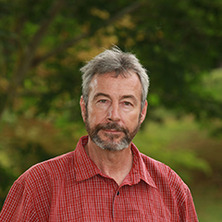Macadamias are the first – and so far only – Australian native food crop to see significant commercial development, and the home-grown nut’s flavour and nutrition attributes have generated a surge in popularity in recent decades.
While Australia is no longer the only country growing macadamias, it’s certainly one of the largest producers, with an annual harvest of nearly 50,000 tonnes. That volume is expected to grow to cater for rising international demand, and already 70 per cent of Australia’s macadamias are exported.
For many years the Australian industry has been based on varieties little improved from the wild macadamias that dot southern Queensland and northern New South Wales. However, four new cultivars will be released by the Department of Agriculture and Fisheries (DAF) and Horticulture Innovation Australia (HIA) in 2017 that could significantly improve the industry’s productivity. The new varieties are part of a long-running breeding effort which is now run by QAAFI, an institute of the University of Queensland, jointly supported by the Queensland Government.
The Macadamia Breeding and Conservation project is led by Associate Professor Bruce Topp, a principal research fellow at QAAFI’s Centre for Plant Science,

and is funded by HIA with the macadamia levy and the Australian Government.
The project has its origins in a 1996 CSIRO initiative, which began planting 4500 macadamia seedlings. After 22 years of selection trials, a handful of those cultivars will be released as new commercial varieties in 2017.
The potential for improvement is significant. Most current commercial varieties are only two to four generations removed from wild macadamias, compared to crops like peaches, which are the beneficiaries of 16 or more generations of breeding. New varieties offer an opportunity to make Australian macadamia growers more competitive internationally.
New varieties set for release
QAAFI consulted with growers to determine what traits they were looking for in new macadamia varieties. Top of the list was improved yield, and this has been reflected in QAAFI’s cultivar selections.
The top 20 ‘elite’ cultivars selected in the progeny breeding trials had an average yield per tree up to 30 per cent higher than standard varieties. That’s a big jump in yield, but Professor Topp emphasises it’s the product of a 22-year process. Those 20 elite selections were evaluated in regional variety trials managed by DAF through a separately funded project.
Beyond higher-yielding varieties, the breeding program is also exploring smaller trees that make harvesting and high-density planting easier, better rootstocks, and nuts with less saturated fat.
Speeding up the process
The macadamia is a large tree. It doesn’t reach full production until it is 12 to 15 years old, and seedlings need to be grown for seven or eight years to get an accurate picture of their mature yield.
That makes field trials to test how varieties perform in a commercial orchard set-up a time-consuming process. Speeding up that process is one of Professor Topp’s main goals.
“In the next phase of the program, we’re concentrating on producing a much larger number of seedlings, and we’ve developed a new method to screen them much more rapidly,” he says.
“We’ve done experiments to look at the visual evaluation of yield, and compare that to the actual yield we’ve obtained,” says Professor Topp. “We use trained assessors to go out and visually estimate the yield from what’s on the tree.” The visual assessments have proven accurate enough to use instead of manually weighing each tree’s nut production – a big time saver with 10,000 trees to examine.
Strong balance in the gene bank
As the home of the macadamia nut, Australia has a unique resource in its backyard. Four species of macadamias are distributed across northern New South Wales and Queensland, providing a bank of genetic material that puts Australian breeding programs in a strong position compared to those from competing suppliers such as Brazil, South Africa or China.
Only two of those species, Macadamia integrifolia and Macadamia tetraphylla, produce edible raw nuts, but the other two varieties offer promising traits as rootstocks. “The native germplasm is one of the real strengths we’ve got,” Professor Topp says.
The initial breeding work by the CSIRO established two germplasm trials at Tiaro in Queensland and Alstonville in New South Wales, which planted a collection of 220 accessions of the four species, as parent material for breeding.
In 2017, a PhD project is expected to genotype and phenotype the entire collection, to identify novel traits that may improve commercial macadamia varieties, allowing QAAFI to use genomic selection to speed up identification of promising new varieties.
This project is funded jointly funded by the Department of Agriculture and Fisheries and University of Queensland, and Horticulture Innovation Australia.



